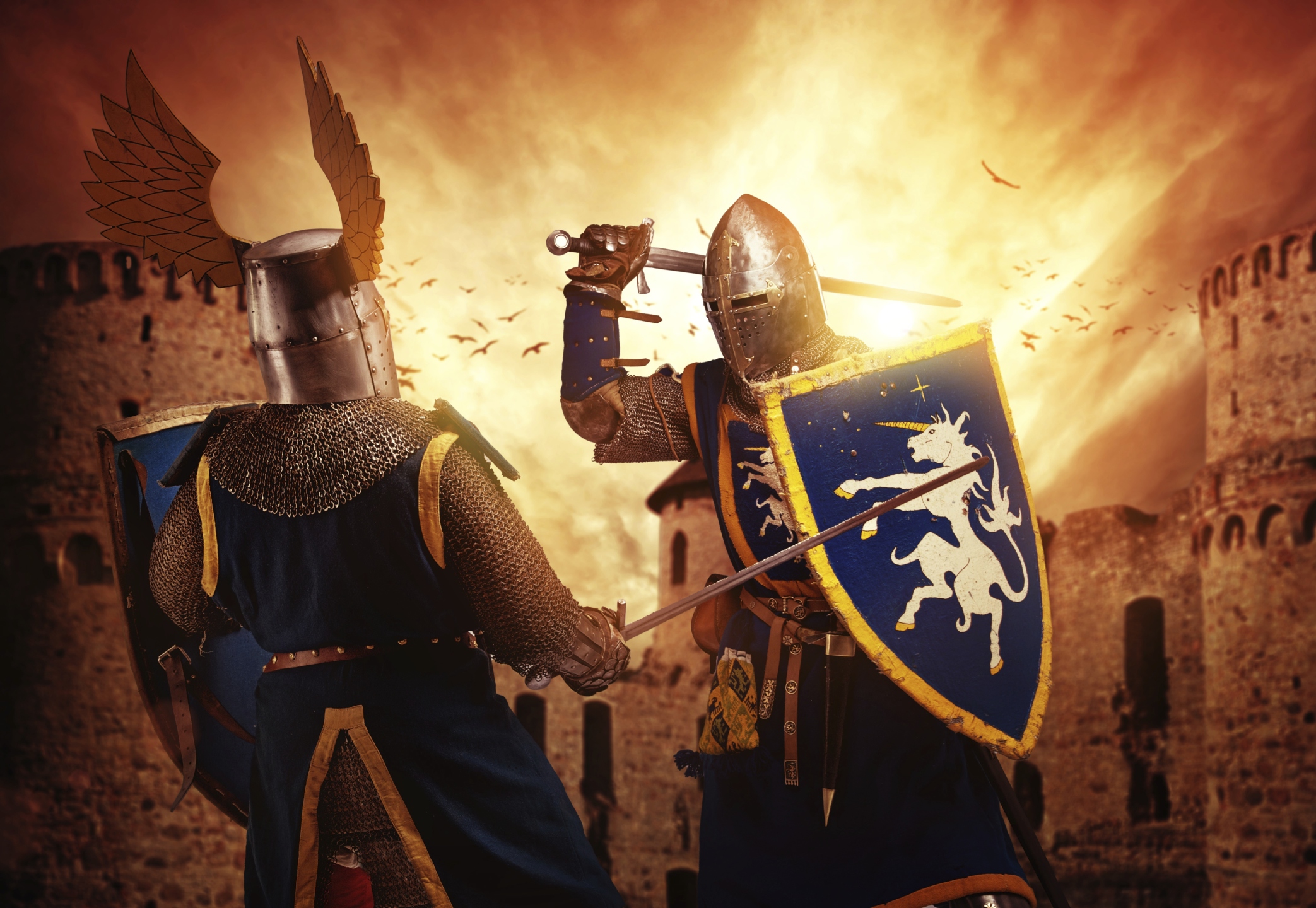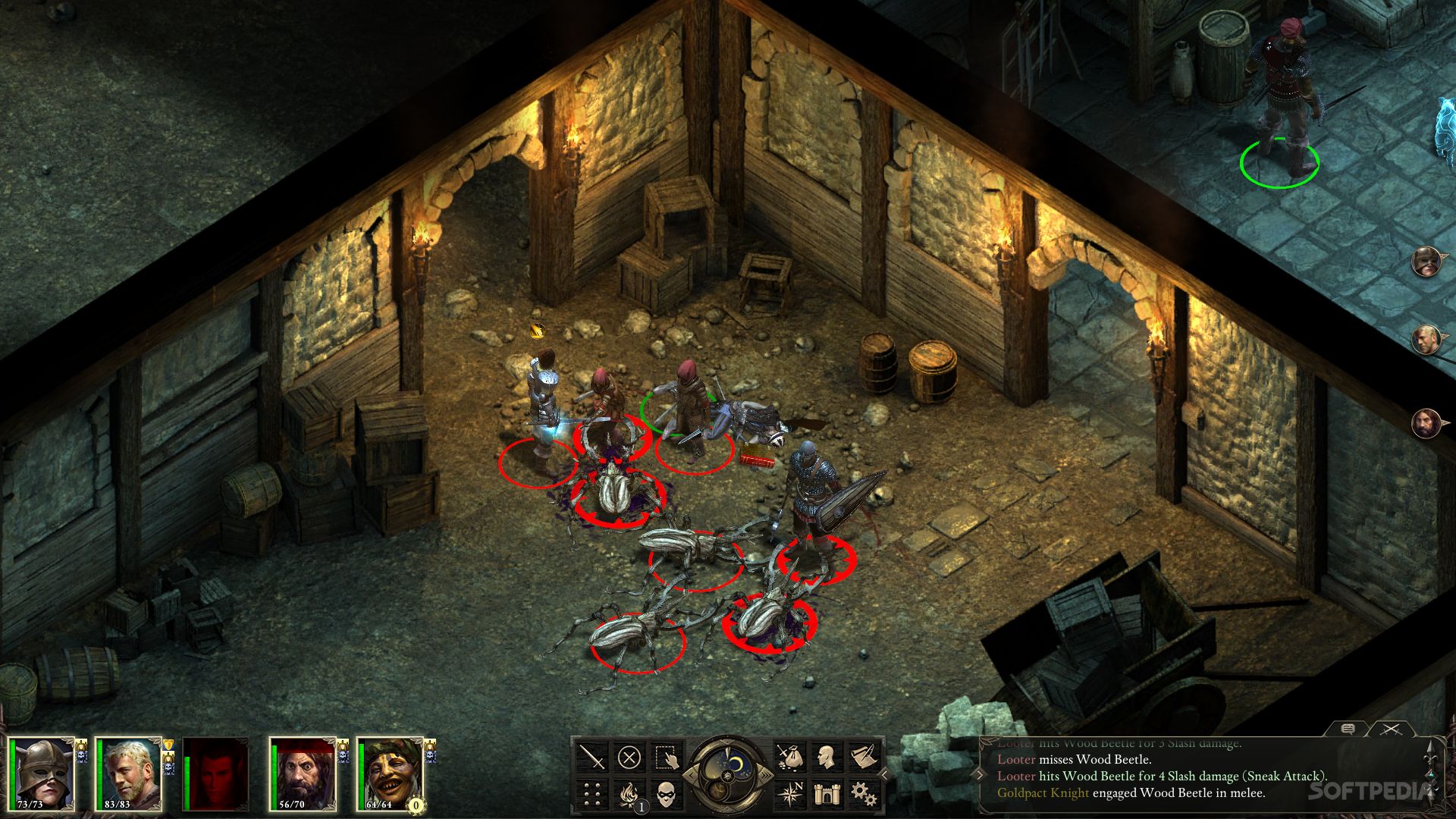Why too much combat hurts great RPGs
What a game chooses to reward says a lot about the kind of play the creators want to encourage.

In the tutorial dungeon during the first act of Pillars of Eternity you meet a xaurip—one of the game’s reptilian kobold creatures. It’s feebly waving a spear, but obviously isn’t much of a threat. In another RPG you might be tempted to heroically slaughter this sickly three-foot specimen because, hey, level two ain’t gonna hit itself. But in Pillars of Eternity you don’t earn experience points for every single thing you kill. It ties its biggest XP rewards to quest completion instead, theoretically allowing you to pursue non-violent solutions without feeling like you’re holding yourself back, without having to worry that you’re weakening your future self by not beating up every single wheezing geckoman you meet. You could talk to him instead.
The tabletop RPGs Pillars of Eternity draws heavily on for inspiration have gone down similar paths, with the last few editions of Dungeons & Dragons all suggesting heroes who sneak past an ogre deserve the same amount of experience as those who murder it, while other RPGs hand out points for making in-character decisions or even making other players laugh. What a game chooses to reward says a lot about the kind of play the creators want to encourage.

One of the things Pillars of Eternity gives experience points for is finding new maps, and that pushes you toward exploration. You want to barge into every building in town, and when you do you inevitably find quest-givers waiting in them. It saves its big rewards for completing those quests, which means you’re less likely to wander off and fill your journal with more tasks you’ll never get around to. In other games it’s easy to stop seeing them as heroic deeds you’ve vowed to accomplish and instead think of them more like suggestions. ‘Yeah, sure, I will almost definitely find your missing husband, but I also have to become head of the Thieves Guild and have a drinking competition with a guy down the pub.’ Here, you’re motivated to actually tie up those loose ends in your questlog.
Knowledge is murder
Pillars of Eternity also gives experience points for adding to the bestiary that explains the backstory of each new kind of opponent and what their weaknesses are. (It’s worth reading the entry for wichts just to see how messed up that particular bit of lore is.) To add to those entries, however, you have to kill a certain amount of that enemy. While taking away experience rewards for killing with one hand, it noncommittally slides a few of them back with the other. And of course there’s the other kind of reward—every enemy drops loot, whether it’s craftable lumps of gross animal flesh or an assortment of box-fresh weapons, armor, and clothing to be sold at the next shop. 1
The reason Pillars of Eternity goes back on the promise of a game that doesn’t give XP for combat is because there’s so much of that combat. You earn the Relative Pacifism achievement for killing less than 175 of the Dyrwood’s creatures and NPCs on your way to the endgame, because that is genuinely a difficult thing to do. Think about that: it’s hard to only snuff out the lives of 175 beings in a playthrough. There are times when you can sneak past enemies, but you need the right skill. You can take shortcuts past them in some dungeons, though you might need a grappling hook or the ability to find a secret door. And there are several times where you can talk your way out of a fight, though you need to kill a batch of enemies to get to the point where you’re allowed to talk to one.
The spider-headed vithrack people are encountered in two dungeons and in both cases it’s possible to engage in dialogue with their leaders, realize they’re just protecting their nests, and come to an understanding that’s mutually beneficial. In both cases you have to hack your way through a room full of the giant spiders they use as pets and guards first. You’re basically engaging in diplomatic negotiation with someone while covered in their pet dogs’ blood and viscera. The pattern repeats in other locations—removing incentives for combat and providing alternative solutions, then adding some of those incentives back in and creating unavoidable battles. It’s a confused approach to game design, but not one that’s unique to Pillars of Eternity.

Grindstone
Take The Banner Saga, for instance. A survival epic about leading a caravan of weary refugees across endless snowfields, it’s full of hard choices and the struggle to ration supplies. It’s also full of turn-based tactical combat that has some interesting twists, like the way turns alternate meaning smaller groups act faster, and the way it uses the same stat for health and damage output, modeling injury with admirable bluntness. But unavoidable battles are jammed into every possible gap like donuts into Homer Simpson, because even though risking lives in open warfare is a bad idea on the game’s narrative level, it’s the main way to earn Renown. In The Banner Saga, Renown is both XP and cash, and you need it to buy supplies. Frequent combat becomes essential, which ruins the pacing. It doesn’t feel like a slog because you’re marching for miles to the next settlement but because you’ll have a dozen identical skirmishes along the way.2
Keep up to date with the most important stories and the best deals, as picked by the PC Gamer team.
In the 1990s you could market a game entirely on a combination of attack animations that were satisfying to unleash and some basic leveling up. When I was a kid, I was wowed by that stuff like everybody else. We all gasped as hobgoblins exploded into bouncing lumps of meat in Baldur’s Gate and then argued about when it was best to dual-class Imoen from Thief into Mage. It seems ridiculous now but we sat around our monitors in awe at this new paradigm, as if we were hearing silent film suddenly transition into sound.

But Al Jolson’s voice booming out of The Jazz Singer in 1927 didn’t lead immediately to a golden age of talkies. Everyone was so taken by the singing that Hollywood just churned out more musicals at an astonishing rate, banking on the fact that people were impressed enough by song-and-dance routines to forgive all the fluffed lines and awkward pauses in a movie like The Broadway Melody. (They did: it was the first sound film to win the Oscar for Best Picture.) In 1930 Hollywood released over 100 musicals, but in 1931 they only released 14. Audiences eventually got bored of every movie featuring two tapdance scenes unrelated to the plot.
This era of gaming is going to look a lot like the musical glut of the late 1920s someday.
In an arcade brawler or shoot-em-up all you need is a solid set of combat mechanics repeated at smoothly escalating levels of difficulty, but narrative games, the ambitious kind that expend effort making us interested in their locations and the people in them, do themselves no favors by awkwardly marrying the two with the promise of experience points as a dowry. This era of gaming—when we’re so easily swayed by a game promising us 50 hours that we’ll repeat the same actions for half that run-time because somewhere a number is going up—is going to look a lot like the musical glut of the late 1920s someday. Of course musicals didn’t go away entirely and fights will always be a part of the kind of narrative games based on adventure fiction, but hard-wiring combat into a game’s mechanics in ways that force it to be a regular necessity is something we’ll look back on as an inexplicable artifact of the time.
There was a review of Doom in the April 1994 issue of Edge that infamously declared, ‘If only you could talk to these creatures, then perhaps you could try and make friends with them, form alliances... Now, that would be interesting.’ Obviously, that’s ludicrous. What’s fun about Doom is that you can round a corner and open fire on a bunch of imps without thinking, sliding from shootout to shootout without slowing down to talk to anyone. (Except maybe to say, ‘That’s your spinal cord, baby’ or ‘Now I’m radioactive. That can’t be good!’)3 Shoehorning in dialogue options wouldn’t have improved Doom, but by the same token a hundred killing sprees don’t improve games where the appeal is in agonising over the right conversation choice.
I would have liked to put my sword and blunderbuss away and talk to a few more of the creatures in Pillars of Eternity. I wouldn’t even have minded if some of them burst into musical numbers, just for variety’s sake.
1 Which raises some questions of its own. Why does the village innkeeper have an endless supply of copper coins to pay for chainmail looted from the dead? Why are suits of armor covered in blood and dents still valuable? If I fireball a bandit to death, who is going to pay for his singed hat, even if it has a jaunty feather in it? And so on. The real answer to all these questions is unfortunately, ‘Because otherwise you wouldn’t be able to afford all the upgrades in the stronghold that was promised as part of an unlockable bonus tier on Kickstarter.’
2 Even a first-person shooter like BioShock Infinite can have so much shootybang action it feels at odds with the story and the world-building. Remember the wonder of that floating city the first time you saw it, a barbershop quartet flying past in a zeppelin and every plaza making you want to screenshot like a tourist? About 20 hours later those plazas makes you sigh instead because you know everyone will turn into another deathmatch arena and a zeppelin is just a place for the drawn-out final battle to take place. Without all those enemies to loot I’d never have been able to afford to buy all those upgrades, sure, but I’d have kept my sense of wonder.
3 Those are quotes from the official Doom comic book published in 1996 as a giveaway at cons. It’s a perfect representation of the bloodthirsty state of mind you find yourself in playing Doom, by which I mean it’s entirely demented. One of the scene transitions is covered with the caption ‘Wow! Now I’m in a completely different place!’ It’s the most honest adaptation of a video game into another medium there’s ever been.

Jody's first computer was a Commodore 64, so he remembers having to use a code wheel to play Pool of Radiance. A former music journalist who interviewed everyone from Giorgio Moroder to Trent Reznor, Jody also co-hosted Australia's first radio show about videogames, Zed Games. He's written for Rock Paper Shotgun, The Big Issue, GamesRadar, Zam, Glixel, Five Out of Ten Magazine, and Playboy.com, whose cheques with the bunny logo made for fun conversations at the bank. Jody's first article for PC Gamer was about the audio of Alien Isolation, published in 2015, and since then he's written about why Silent Hill belongs on PC, why Recettear: An Item Shop's Tale is the best fantasy shopkeeper tycoon game, and how weird Lost Ark can get. Jody edited PC Gamer Indie from 2017 to 2018, and he eventually lived up to his promise to play every Warhammer videogame.

